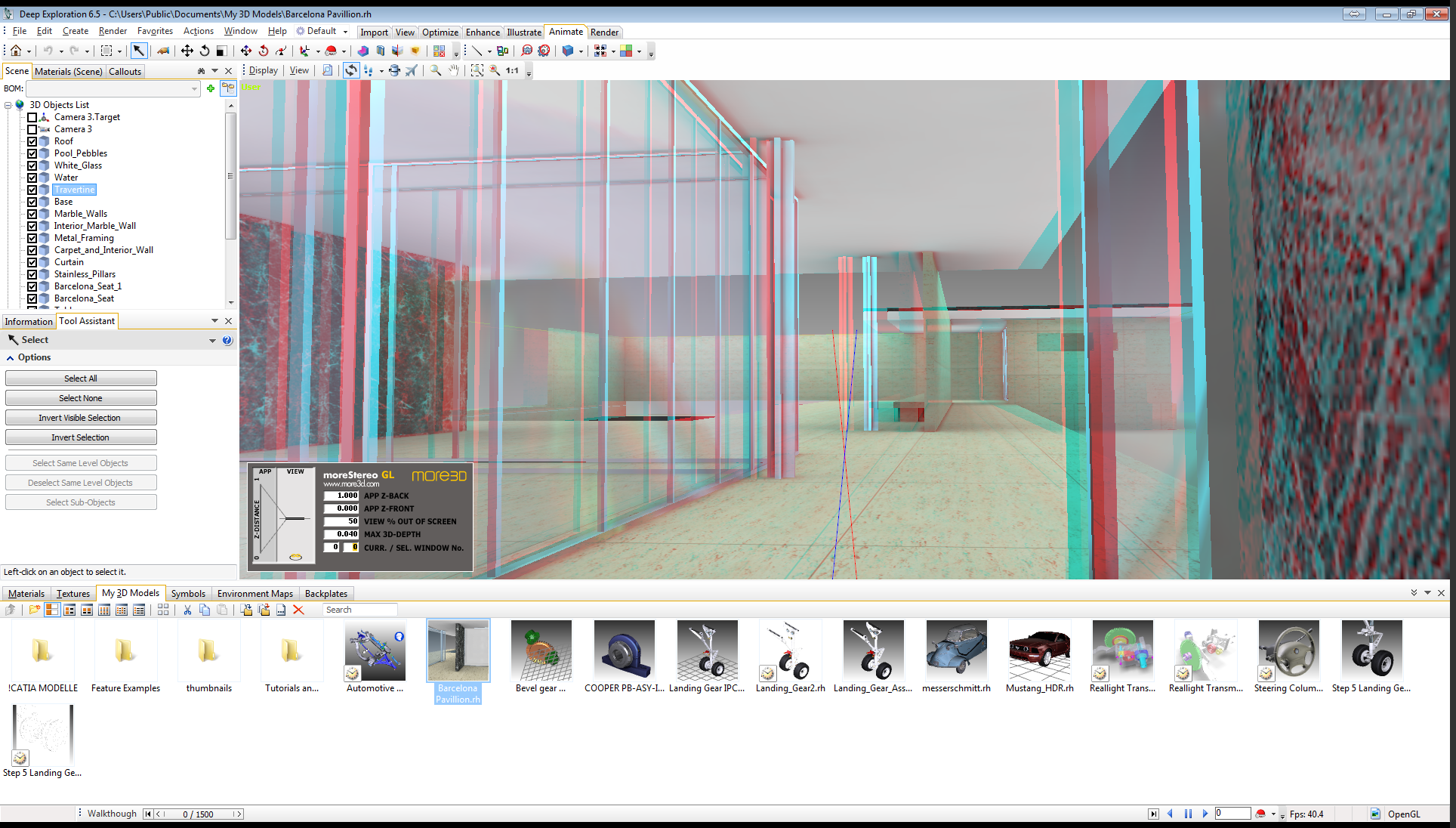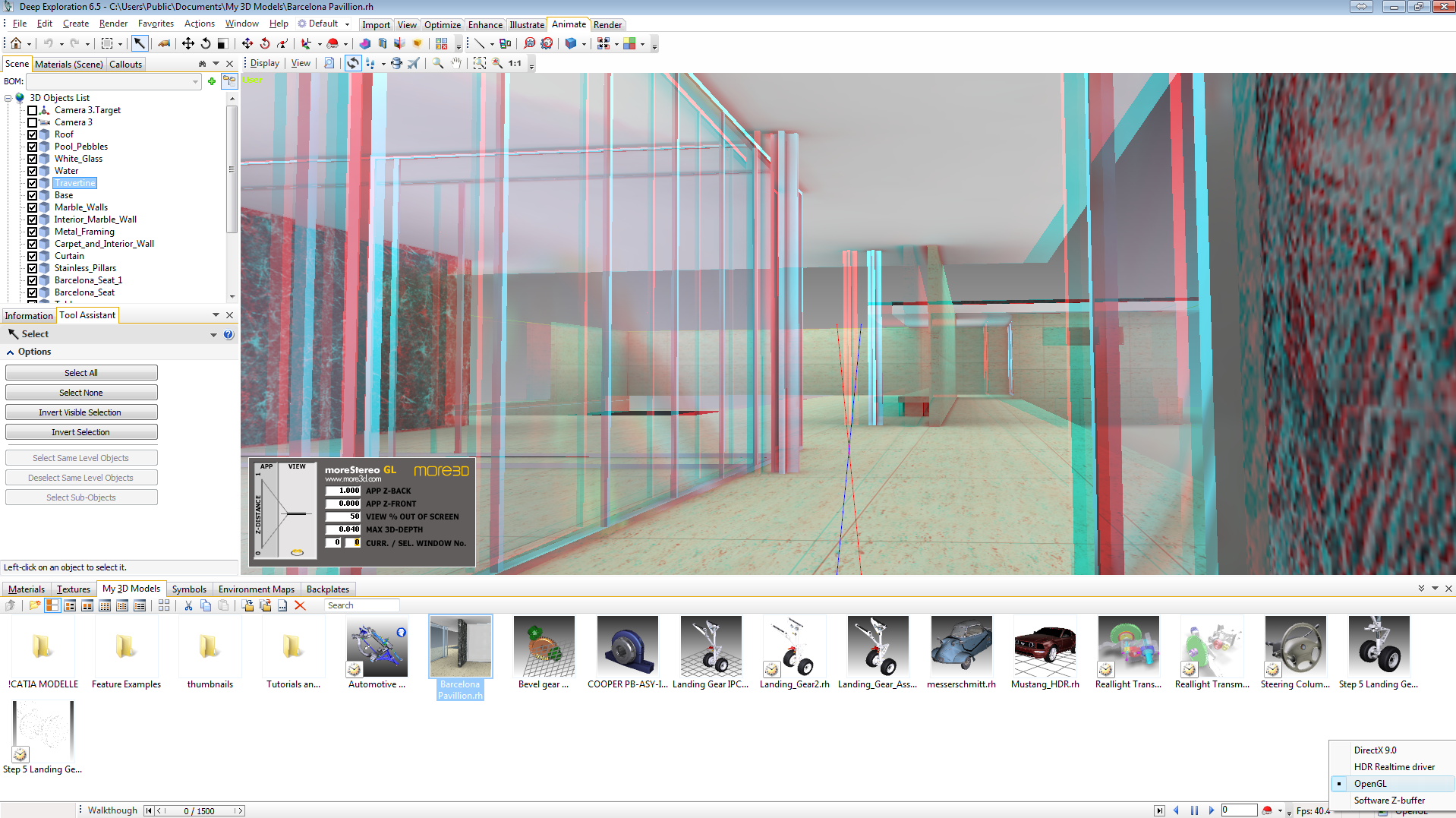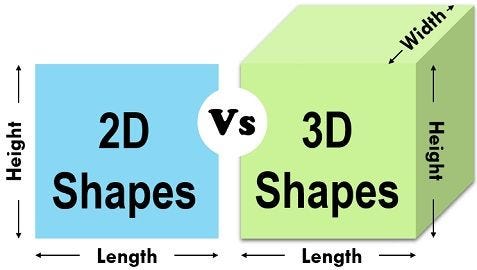Imagine being transported into a realm where virtual worlds come alive, where everything you see is meticulously crafted to appear three-dimensional and lifelike. Welcome to the fascinating world of 3D graphics, where artists and designers work their magic to create stunning visual experiences that push the boundaries of imagination. In this article, we will take you on a journey through the intricacies of 3D graphics, unveiling the techniques and technologies that bring these captivating digital landscapes to life. So buckle up and get ready to explore the incredible depth of 3D graphics!

Introduction to 3D Graphics
What are 3D graphics?
You’ve probably heard of 3D graphics before, but what exactly does it mean? 3D graphics refers to the creation, rendering, and manipulation of objects that appear to have three-dimensional characteristics in a virtual environment. Unlike 2D graphics that are flat and lack depth, 3D graphics provide a sense of depth, perspective, and realism, making them more immersive and visually appealing.
Importance of 3D graphics in various industries
The use of 3D graphics has become increasingly important in various industries. In the gaming industry, 3D graphics breathe life into virtual worlds, allowing players to explore realistic and visually stunning environments. Movies and animation also heavily rely on 3D graphics to create visually captivating scenes and memorable characters. Furthermore, 3D graphics are essential in architectural and industrial design, enabling designers to visualize and present concepts more effectively. In the field of virtual reality and augmented reality, 3D graphics play a crucial role in creating immersive and interactive experiences. Even in medical imaging, 3D graphics are utilized to create detailed visualizations of the human body, aiding in diagnostics and surgical planning.
Evolution of 3D graphics technology
Over the years, 3D graphics technology has witnessed significant advancements. What once started as simple wireframe models has now evolved into complex and realistic simulations. In the early days, 3D graphics were limited by technological constraints, but with the emergence of more powerful hardware and sophisticated software, the possibilities have expanded. The introduction of faster processors, dedicated graphics cards, and efficient algorithms has enabled real-time rendering and more realistic visual effects. Additionally, the integration of physics simulations and motion capture technologies has brought 3D graphics closer to reality. As technology continues to progress, it is exciting to see how 3D graphics will continue to evolve and shape various industries.
Applications of 3D Graphics
Video Games
One of the most prominent applications of 3D graphics is in the realm of video games. 3D graphics have revolutionized the gaming industry, allowing for the creation of immersive and visually stunning virtual worlds. From realistic environments to intricately designed characters, 3D graphics have shaped the way we experience games. Players can now enjoy highly detailed landscapes, dynamic lighting, and lifelike animations that enhance the overall gaming experience. With advancements in hardware and software, games continue to push the boundaries of realism, drawing players into increasingly immersive and engaging virtual realities.
Movies and Animation
When it comes to movies and animation, 3D graphics have become an integral part of the production process. They allow filmmakers and animators to bring their creative visions to life on the screen. 3D graphics enable the creation of fantastical worlds, larger-than-life characters, and mind-bending visual effects that captivate audiences. From animated feature films to visual effects in live-action movies, 3D graphics have transformed the way stories are told on the big screen. With 3D modeling, texturing, animation, and rendering techniques, filmmakers can create visually stunning and visually effects that were once unimaginable.
Architectural and Industrial Design
3D graphics have greatly influenced architectural and industrial design practices. Designers now use 3D modeling software to create detailed virtual representations of buildings, products, and environments. This enables them to visualize their designs more accurately and make necessary modifications before the actual construction or manufacturing process begins. 3D graphics provide clients and stakeholders with a realistic preview of the final product, streamlining the design and approval process. Additionally, the use of virtual reality technologies allows designers and clients to virtually walk through and interact with 3D models, giving them a better understanding of the space and ergonomics.
Virtual Reality and Augmented Reality
Virtual reality (VR) and augmented reality (AR) heavily rely on 3D graphics to create immersive and interactive experiences. In VR, users are transported into entirely virtual worlds, where 3D graphics are used to create realistic environments and objects. This allows users to feel like they are physically present in the virtual world. AR, on the other hand, overlays virtual objects onto the real world, enhancing the user’s perception of the environment. 3D graphics in AR enable the integration of virtual objects into the real world seamlessly. From gaming and entertainment to training and education, VR and AR are expanding rapidly, and 3D graphics play a vital role in their advancement.
Medical Imaging
In the field of medical imaging, 3D graphics are crucial for creating detailed and accurate visualizations of the human body. Techniques such as computed tomography (CT), magnetic resonance imaging (MRI), and ultrasound generate volumetric data that can be processed and transformed into 3D models. These 3D models help physicians and surgeons better understand complex anatomical structures and plan interventions and surgeries more effectively. Additionally, real-time simulations and virtual surgeries using 3D graphics can aid in surgical training and improve patient outcomes. The use of 3D graphics in medical imaging continues to advance, contributing to the development of more precise diagnostics and personalized treatments.

Principles of 3D Graphics
Geometry
Geometry is the foundation of 3D graphics. It involves defining the shape and structure of objects in a virtual space. Objects in 3D graphics are made up of vertices, edges, and polygons that form geometric representations. By manipulating these components, 3D models can be created and transformed according to the desired design.
Rendering
Rendering is the process of generating a 2D image from a 3D model. It involves applying textures, materials, lighting, and other visual effects to the models to create a realistic representation of the scene. Rendering takes into account the position of the virtual camera, the properties of light sources, and the interactions of materials to produce a final image.
Shading
Shading is the process of determining how light interacts with the surfaces of 3D models. It involves calculating the color and intensity of each pixel based on factors such as the angle of incidence, reflection, and transparency. Shading algorithms simulate the way light behaves in the real world, resulting in more realistic and visually pleasing images.
Texture Mapping
Texture mapping is the process of applying 2D images, called textures, onto the surfaces of 3D models. This technique adds visual details and surface characteristics to the models, giving them a more realistic appearance. Texture mapping allows for the creation of complex materials, such as wood, metal, and fabric, by mapping the texture onto the geometry based on predefined coordinates.
Lighting
Lighting plays a crucial role in 3D graphics as it determines how objects are illuminated and perceived in a virtual scene. It involves the simulation and placement of light sources to create the desired ambiance and highlight the features of the 3D models. By manipulating the intensity, color, and direction of light sources, artists and designers can achieve different moods and visual effects.
Animation
Animation in 3D graphics involves bringing objects to life by creating the illusion of motion. It involves defining keyframes, which are specific poses or states of the object at specific moments in time, and using interpolation techniques to generate the in-between frames. Animation allows for the creation of dynamic and interactive content, enhancing the user experience in games, movies, and other forms of media.
3D Modeling Techniques
Polygonal Modeling
Polygonal modeling is one of the most commonly used techniques in 3D graphics. It involves creating 3D models by connecting vertices with edges to form polygons. By manipulating the position and shape of these polygons, complex objects can be achieved. Polygonal modeling is versatile and suitable for a wide range of applications, from character modeling to architectural visualization.
NURBS Modeling
Non-uniform Rational B-Splines (NURBS) modeling is a mathematical representation of 3D curves and surfaces. Unlike polygonal modeling, NURBS modeling uses mathematical formulas to define smooth and precise geometry. NURBS models are based on control points and curves that can be modified to achieve the desired shape. This technique is commonly used in automotive design, product design, and industrial design.
Spline Modeling
Spline modeling involves creating 3D models using curves or splines as the base shape. Splines are used as a guide to define the overall shape of the object, which can then be converted into a polygonal or NURBS model. This technique allows for organic and free-form designs, making it suitable for character modeling, organic objects, and natural landscapes.
Procedural Modeling
Procedural modeling involves using algorithms and rules to generate 3D models automatically. Instead of manually creating every detail, artists can define a set of parameters and rules that determine the properties and appearance of the models. Procedural modeling is often used for generating natural environments, such as forests, terrains, and cityscapes, as well as for creating variations of objects and textures.
Digital Sculpting
Digital sculpting is a technique that simulates traditional sculpting in a digital environment. Artists can manipulate a digital clay-like material using sculpting tools and brushes to create detailed and intricate 3D models. The advantage of digital sculpting is the ability to add finer details and subtle variations to the models, making it a preferred technique for character modeling and creature design.
Photogrammetry
Photogrammetry is a technique that uses photographs to create 3D models. It involves capturing multiple images of an object or a real-world environment from different angles and processing them to extract depth information. Photogrammetry software analyzes the photographs and reconstructs the geometry and textures of the scene, resulting in highly accurate and realistic 3D models. This technique is commonly used in fields such as archaeology, cultural heritage documentation, and virtual tourism.

Software and Tools for 3D Graphics
3D Modeling Software (e.g., Blender, Autodesk Maya)
When it comes to 3D modeling, there are several powerful software options available. Blender and Autodesk Maya are two of the most popular choices among artists and designers. Blender is an open-source software that offers a comprehensive set of tools for 3D modeling, animation, rendering, and more. It is widely used by amateurs and professionals alike. Autodesk Maya, on the other hand, is a professional-grade software used in the film, television, and game development industries. It offers advanced features and a robust workflow for creating high-quality 3D models.
Rendering Software (e.g., V-Ray, Arnold)
Rendering software is used to generate the final 2D images or animations from 3D models. V-Ray and Arnold are two renowned rendering engines that provide photorealistic rendering capabilities. They offer advanced lighting, shading, and global illumination algorithms that produce realistic and visually stunning results. These rendering engines are widely used in the film, advertising, and architectural industries.
Animation Software (e.g., Autodesk 3ds Max, Cinema 4D)
For animating 3D models and creating dynamic visual effects, animation software is essential. Autodesk 3ds Max is a widely used software for animation, offering a range of tools for rigging, character animation, and motion graphics. Cinema 4D is another popular choice known for its intuitive interface and versatility. It is widely used in motion graphics, broadcast graphics, and visual effects.
CAD Software (e.g., AutoCAD, SolidWorks)
CAD software is widely used in architectural design, engineering, and product design. AutoCAD is a popular choice for drafting and creating technical drawings. It offers precise 2D and 3D modeling capabilities and is widely used in architecture and construction. SolidWorks, on the other hand, is a powerful CAD software specifically designed for mechanical engineering and product design. It offers parametric modeling capabilities and advanced simulation tools.
Texturing Software (e.g., Substance Painter, Adobe Photoshop)
Texturing software is used to create and manipulate textures for 3D models. Substance Painter is a leading texturing software known for its advanced materials and painting tools. It offers a range of texturing features such as procedural materials, particle brushes, and real-time feedback. Adobe Photoshop, a well-known software in the digital art world, is also widely used for texturing purposes. It allows artists to create and edit textures using a wide range of brushes, filters, and layer blending options.
Compositing Software (e.g., Adobe After Effects, Nuke)
Compositing software is used to combine different elements, such as 3D renders, live footage, and visual effects, into a final composite. Adobe After Effects is a popular choice for motion graphics and visual effects compositing. It offers a wide range of tools for keying, tracking, and blending visual elements. Nuke, a professional compositing software, is widely used in film and television production. It offers a node-based workflow and advanced compositing features.
Challenges in 3D Graphics
Realism vs. Performance
One of the ongoing challenges in 3D graphics is balancing realism with performance. As technology advances, artists and designers strive to create more realistic and detailed 3D models and environments. However, rendering such detailed scenes in real-time can be demanding on hardware resources. Artists often need to find a balance between pushing the boundaries of realism and maintaining a smooth and responsive user experience.
Polygon Count and Optimization
The polygon count of a 3D model significantly affects its performance and render times. Models with a high polygon count require more computational power and memory, which can result in slower rendering and lower frame rates. Optimizing the polygon count without compromising the visual quality is a challenge that artists and designers constantly face. Techniques such as LOD (Level of Detail) and mesh simplification are commonly used to reduce the polygon count while preserving the overall appearance of the model.
Simulating Physics and Dynamics
Simulating realistic physics and dynamics in 3D graphics can be a complex task. It involves accurately modeling the behavior of objects, such as gravity, collisions, and constraints. Achieving realistic physics simulations often requires a balance between accuracy and performance. Real-time simulations can be challenging to achieve, especially when dealing with complex interactions and large numbers of objects.
Motion Capture and Character Animation
Capturing and animating realistic human movements is a significant challenge in 3D graphics. Motion capture techniques are used to record the movements of actors or objects, which can then be applied to 3D models. However, achieving accurate and natural-looking animations still requires manual tweaking and refinement. Artists and animators need to carefully consider timing, weight, and expressions to create convincing character animations.
Hardware Limitations
Despite the advancements in hardware technology, there are still limitations in terms of processing power, memory, and storage. High-quality 3D graphics often require powerful hardware configurations to achieve the desired results. Artists and designers must consider hardware limitations when creating and optimizing their 3D models and scenes. It is important to strike a balance between visual quality and hardware requirements to ensure optimal performance on a wide range of systems.

Recent Advancements in 3D Graphics
Real-time Ray Tracing
Ray tracing is a rendering technique that simulates the behavior of light to create realistic lighting and reflections in 3D graphics. Traditionally, ray tracing was computationally expensive and used primarily for offline rendering. However, recent advancements in hardware, such as the introduction of dedicated ray tracing cores in GPUs, have made real-time ray tracing achievable. Real-time ray tracing allows for more accurate and realistic rendering in applications such as gaming and interactive experiences.
Physically-Based Rendering
Physically-based rendering (PBR) is an approach to rendering that aims to accurately simulate the behavior of light in real-world environments. PBR takes into account physical properties of materials, such as reflectance, roughness, and transparency, to produce more realistic and visually appealing results. The use of PBR has become increasingly popular in the gaming and film industries, allowing for more consistent and believable visual representations.
Machine Learning in 3D Graphics
Machine learning techniques are being applied to various aspects of 3D graphics, opening up new possibilities and improving workflows. Neural networks can be trained to generate realistic textures, enhance or modify existing images, and even predict missing geometric information. Machine learning algorithms can also be used for denoising and upscaling rendered images, reducing the computational cost of producing high-quality results.
Virtual Production Techniques
Virtual production techniques leverage real-time rendering and virtual environments to improve workflows and reduce production costs in the film and television industries. By combining physical sets with virtual sets, filmmakers can preview and capture scenes in real-time, reducing the need for extensive post-production and visual effects work. Virtual production techniques also allow for greater creative freedom, enabling directors to make real-time adjustments and iterate on set design and lighting.
Cloud-based Rendering Solutions
Cloud-based rendering solutions have emerged as a convenient and scalable alternative to traditional rendering workflows. Instead of relying on local hardware, cloud-based rendering utilizes remote data centers with high-performance servers. This approach allows artists and designers to offload rendering tasks, reducing computation times and freeing up local resources. Cloud-based rendering solutions also enable collaboration and access to rendering power that may not be feasible on local machines.
Future of 3D Graphics
Increased Realism and Immersion
The future of 3D graphics holds the promise of even greater realism and immersion. Advancements in rendering techniques, hardware capabilities, and artificial intelligence will likely lead to more detailed and lifelike virtual environments. Real-time ray tracing, improved physics simulations, and enhanced shaders will contribute to more convincing and immersive experiences, whether in video games, movies, or virtual reality.
Improvements in Real-time Rendering
Real-time rendering will continue to advance, allowing for more interactive and dynamic experiences. Faster processors, improved graphics cards, and optimized rendering algorithms will enable real-time rendering of highly complex scenes with realistic lighting, shadows, and effects. Virtual reality and augmented reality will benefit from these advancements, providing users with more realistic and responsive virtual environments.
Integration with AI and Machine Learning
The integration of AI and machine learning will play a significant role in the future of 3D graphics. Machine learning algorithms can be used to automate repetitive tasks, such as texturing and animation, allowing artists to focus on creativity and design. AI-powered assistants and tools will assist artists in generating realistic textures, optimizing scenes, and streamlining the 3D modeling process. Additionally, machine learning models can be trained to predict user preferences and generate personalized content in real-time.
Advancements in Hardware (e.g., GPUs)
As hardware technology continues to advance, the capabilities of 3D graphics will expand. More powerful graphics processing units (GPUs) will allow for faster rendering times, higher polygon counts, and more complex simulations. Specialized hardware, such as ray tracing cores and tensor cores, will continue to improve the efficiency and realism of 3D graphics. As hardware becomes more accessible and affordable, the barriers to entry in the 3D graphics industry will continue to lower.
Wider Adoption in Non-Entertainment Industries
While 3D graphics have already made significant contributions to the entertainment industry, their applications in non-entertainment industries are also expanding. Fields such as architecture, engineering, manufacturing, and healthcare are leveraging 3D graphics for visualization, simulation, and analysis. The use of virtual and augmented reality in these industries is on the rise, providing professionals with powerful tools for design, training, and problem-solving. As the benefits of 3D graphics become more apparent in non-entertainment sectors, their adoption will inevitably increase.

Conclusion
The impact of 3D graphics on various fields, from entertainment to medicine, cannot be overstated. The ability to create realistic and immersive virtual environments has revolutionized the way we experience and interact with digital media. From video games and movies to architecture and medical imaging, 3D graphics have shaped industries, empowered artists and designers, and enriched our lives. With constant advancements in technology, the future of 3D graphics holds even more exciting possibilities, promising increased realism, improved real-time rendering, integration with AI, and wider adoption in non-entertainment industries. As 3D graphics continue to evolve, they will continue to captivate our imaginations and push the boundaries of what is possible in the digital realm.

Recent Comments